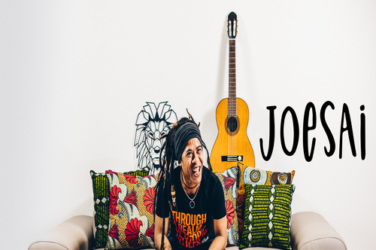In the issue “Reggae Rhizome,” Kultur discussed the impact of technological advances on the replication of reggae, which paved the way for the emergence of a number of digital subgenres. The application of technology (drum machines, sequencers, samplers) or various plugins has revolutionized music production, enabling reggae to be performed in diverse styles and approaches. Over the past two decades since the 2010s, the music scene has shown a clear trend toward digital music culture, sparking various new experiments and explorations, one of which is currently a phenomenon in Papua: Wisisi music.
Wisisi: Drum and Bass from Papua
In general, Wisisi music is categorized as EDM. But upon closer listening, you can hear the infusion of skanking off-beat reggae rhythms blended with the distinctive melodies and rhythms of the Lani people of the Baliem Valley in Wamena. The result is hypnotic—music that compels the body to dance. These sonic elements—rhythm, melody, and instrumentation—are rooted in the traditional music of the Papuan Highlands and crafted by Asep Nayak, the self-taught maestro behind Wisisi. His work is a singular and authentic expression of how sound can reflect local history and identity while engaging in dialogue with other cultures through the universal language of music.

Asep Nayak — Instagram: @asep_nayak
The following is an excerpt from Kultur’s Q&A with Asep Nayak:
Kulturdotmedia: Wa.. wa.. wa.. wa.. (traditional greeting from Wamena). Hi Asep, greetings! How are you?
Asep Nayak: Wa.. wa.. wa.. wa.. I’m extremely healthy
Kulturdotmedia: How should we address you? Is Asep your full name?
Asep Nayak: Asep Nayak is my stage name. Nayak is a term used to address men in the Baliem Valley region. My full name is Asep Alexzander Logo.
Kulturdotmedia: You’re known as the pioneer of Wisisi music. Can you tell us what it actually is?
Asep Nayak: Wisisi is originally a traditional chant from western Wamena, while in the Baliem Valley it’s called Pesek. But both are the same. In wisisi and pesek, people usually sing spontaneously while conveying messages—sadness, joy, or personal stories. It’s an inherited tradition from our ancestors, which I have fused with modern music using FL Studio.
[Wisisi comes from the Lani language, where the term wisisi means an expression of freedom of feeling, with ‘Wi’ meaning guidance or carrying oneself, and ‘Sisi’ inviting the audience to join in the viewing. Wisisi is held in various social rituals such as traditional ceremonies, entertainment events, folk festivals, welcoming guests, fundraising, and celebrations]
Kulturdotmedia: So, Wisisi comes from western Wamena. Which areas does it cover?
Asep Nayak: West Wamena includes Lani Jaya, Puncak Jaya, Tolikara, Tagime, Bolakme, the Bolakme border, Pyramid, and further down into Jayawijaya district (the Baliem Valley/Wamena).
Kulturdotmedia: Is traditional Wisisi just singing, or does it use instruments?
Asep Nayak: Pesek and Wisisi are usually accompanied by instruments like the guitar. However, in some traditional ceremonies, it’s purely vocal—such as E’tai. I’m less certain about how it’s done in western Wamena, though.
Kulturdotmedia: The Wisisi music you created, which became widely known, is electronic. What inspired you?
Asep Nayak: It started when I was in junior high school (YPPK ST.Thomas) in Wamena, around 2012. I had a friend named Nikolas Sorabut who made Wisisi tracks. At parties, after the traditional singing, they would play Nikolas’s Wisisi tracks, and everyone loved it. I was inspired by that. After my foster father bought me a laptop, I started researching how to make music myself. I wondered, “Do they use a keyboard? What software?” I went to the internet café almost every day looking for answers but couldn’t find much. Eventually, another friend, Fredi, who made pop and hip-hop music, introduced me to the software people used. I started experimenting with it on my laptop. The first track I made back then I still keep today. From there I became more enthusiastic—spending all day in my room making music until I forgot the time and even forgot to eat (laughs). At school, whenever I had a free period, I’d run home to continue making music.
Kulturdotmedia: Was it FL Studio you used at that time?
Asep Nayak: Yes, that’s right. I kept teaching myself how to record. My house was often noisy, so I had to go into the woods to record vocals. But then the wind and birds would get recorded too. There are techniques to remove noise, but I didn’t know them back then. There weren’t any tutorials like on YouTube today.
Kulturdotmedia: What kind of music did you listen to before making EDM? To us, it sounds like jungle or drum and bass. Have you listened to reggae or hip-hop?
Asep Nayak: Actually, my main inspiration is traditional music. Since elementary school, I’ve often listened to reggae from PNG (Papua New Guinea) and Mambesak (a Papuan folk group). But when I make music, I build on traditional songs, then enhance them with plugins like bass, kick drums, snares, and more.
Kulturdotmedia: You mentioned you used to record in the woods. Do you have a studio now?
Asep Nayak: I don’t have a proper studio. Any comfortable room becomes my studio. For vocals, I just use my regular headset. My only equipment is my laptop and headset.
Kulturdotmedia: Are you still using FL Studio, or do you use other software now?
Asep Nayak: I still use FL Studio. To upload music to YouTube and get more viewers, I also need visuals, so I taught myself how to film and edit. Whenever there’s an event or party, I take the chance to shoot footage for my videos.
Kulturdotmedia: What about live performances? Do you perform with a DJ setup?
Asep Nayak: I’d been producing music since 2012, but my first live performance was in 2021 when I was invited to the Biennale at the Yogyakarta Cultural Museum. They asked what I would use for my set, and I said just my laptop and headset. Then they offered me a DJ controller. I didn’t know how to use it, so I asked them to teach me. We practiced briefly in the studio, and I only learned how to turn it on and off—most of the other controls I didn’t really understand. So when it came time to perform, I decided to use the DJ controller anyway so it would look good. I thought my songs would be played one by one, but they compiled them into one track from my ten-song set list to fit the time limit.
Kulturdotmedia: So it was mixed?
Asep Nayak: Yes. After that performance, I was given a small DJ controller to keep learning.
Kulturdotmedia: Who gave it to you?
Asep Nayak: Wok The Rock (Woto Wibowo), one of the Biennale curators who invited me. He had been following my music on YouTube for a long time.

Kulturdotmedia: After your first live performance in 2021, did you start performing regularly? Where have you performed?
Asep Nayak: I stayed in Yogyakarta for a month to study music. After that, I started getting invited to perform in Jakarta at events like the G20, Greenpeace, Pesta Pora, Synchronize Fest, and Joyland Festival in Bali. I also performed at the CTM Festival at Berghain in Germany, Rising Festival in Australia, and in Arabia, Africa, and Taiwan.
Kulturdotmedia: Wow, that’s amazing. Was that a tour?
Asep Nayak: Not exactly. In Arabia, it wasn’t live music; it was a screening of a documentary about Wisisi. In Africa, I performed at the Nyege Nyege Festival in Uganda.
Kulturdotmedia: When you perform abroad, do you also use the DJ format?
Asep Nayak: Yes, I ask the organizers to prepare a DJ setup for me.
Kulturdotmedia: How has the response been in Papua? Elders sometimes view modern music negatively.
Asep Nayak: That’s true. Many people say Western music is replacing traditional music. But I tell them I’m not doing this without purpose. With technological development, we need to learn and adapt so our traditional music can survive, collaborating with modern trends. I hold to that principle in my work. I don’t take criticism too personally and always try to explain that I’m preserving culture because Wisisi is fundamentally rooted in tradition. There’s pikon, traditional singing, guitar—I just add variations to make it sound appealing.
Kulturdotmedia: What’s the name of the dance usually performed with Wisisi?
Asep Nayak: It’s commonly called aster wisisi. The cross-step, forward and backward movements may come from the poco-poco dance, but the spinning and shifting steps are from age-old traditional dances. It’s still called aster wisisi.
Kulturdotmedia: Are the dance movements matched to the music’s tempo?
Asep Nayak: Usually there are three or four types of aster movements, if I’m not mistaken. The tempo varies. Some are fast, some are slower. The fastest is usually 150–160 BPM.
Kulturdotmedia: Who would you like to collaborate with?
Asep Nayak: I haven’t really thought about it yet. At the Sentani Lake Festival, I collaborated with friends from the Dayak tribe in Kalimantan.
Kulturdotmedia: So it’s inter-ethnic collaboration?
Asep Nayak: Yes.
Kulturdotmedia: Finally, do you have a message for readers in Papua or Indonesia in general?
Asep Nayak: Technology makes it easier for us to create. Use it wisely. Adapt it to collaborate with our traditions, so we can preserve them ourselves. Don’t let outsiders exploit it. We have our own traditional music and songs; we should strive to develop and protect them by blending them with today’s technology.
(Yedi)







Show Comments (0)